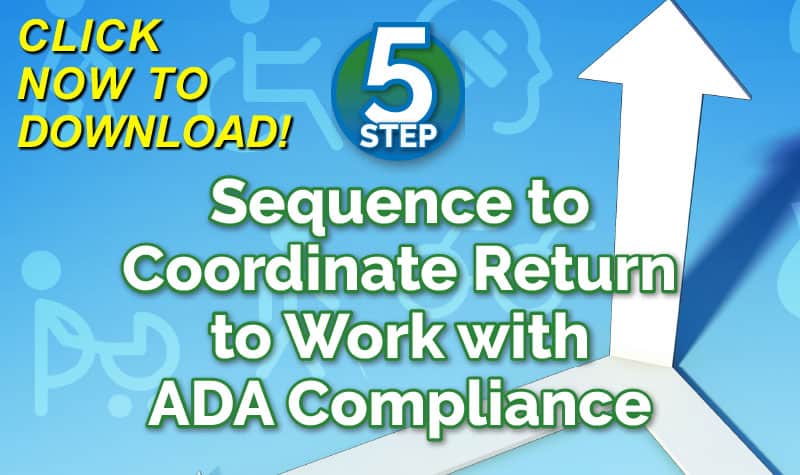British Columbia’s highest court has ordered a transit operator to change its attendance management program in relation to disabled employees after ruling that the program violated the province’s Human Rights Code. (WCxKit)
According to Canadian OH&S News, the three-member panel of the Court of Appeal for British Columbia unanimously agreed earlier in October that Coast Mountain Bus Company Ltd discriminated against workers on the basis of disability.
The panel ordered the employer to cease placing employees with disability-related absences in the program. The panel also reinstated awards of $5,000 or $6,000 for “injury to dignity, feelings and self-respect” to six employees who received adverse treatment as a result of their disabilities.
The appeal court’s decision largely upholds a February, 2008 decision from the British Columbia Human Rights Tribunal which found the attendance management program resulted in “systemic discrimination against employees with chronic and recurring disabilities,” except for an order for tribunal-assisted mediation. It also strikes down a Supreme Court of British Columbia ruling from last year in favor of the transit operator.
At the tribunal hearing, transit operators who testified had disabilities such as Crohn’s disease, diabetes, bile duct disorder, and osteoarthritis. The adjudicator found that the workers were treated as “attendance problems,” with a total of 11 employees terminated under the program. Six successfully grieved their terminations and were reinstated.
“They had a systemic approach to dealing with absenteeism and didn’t take into consideration any disabilities or chronic illnesses that our members had on the job,” stated Don MacLeod, president of the union representing the workers, the Canadian Auto Workers Local 111. “Each individual has their own medical issues and they’re each entitled to be addressed separately because they are all unique.”
The case centers on the five-level attendance management program, which begins with the identification of employees with high absenteeism and ends with the potential termination of an employee.
The stages consist of an informal interview; three formal interviews a Level 1 review of attendance record and formal indication of concern; a Level 2 indication of advanced concern and request for medical assessment; and a Level 3 medical assessment follow-up); and an employment status review.
In essence, the appeal court ordered the employer to cease placing employees at Level 3 into the program on the basis of absences due to disabilities. It also ordered the operator to stop including absences due to disabilities into the attendance records of employees who have reached Level 3.
The decision says that during a Level 3 interview, a letter is given to the employee advising that the employer has established specific attendance parameters. If the employee is absent more than a specific number of days in the following two years, the employer may conduct a review of the worker’s employment status, “at which time termination of his or her employment for excessive, non-culpable absenteeism will be considered.”
The letter adds that in calculating the absence rate, days missed for short-term and long-term disability and workers compensation claims are counted as absences.
“The employee’s employment is expressly put in jeopardy if they do not meet attendance parameters that the adjudicator found were invariably set without any regard to any disabilities that the employees may have,” the appeal court decision reads.
The program came into existence after an auditor general’s report in June, 1997 raised concerns about the absenteeism rate among Vancouver-based transit operators the decision notes. The auditor general discovered that the average annual rate was more than double that of five other North American transit companies.
According to MacLeod, the union filed its first grievance related to the program in 1998. “Through all the 12 years we’ve been fighting this, we recognized the right to have an attendance management program. Our issue is the way [the employer was] delivering the program,” he says. “The way the program used to work was [to] throw everything in the mix. They just threw everything at the wall trying to figure out what would stick at the end of the day,” MacLeod charges. (WCxKit)
According to Derek Zabel, a spokesman for Coast Mountain Bus Company, company officials are currently meeting and discussing the decision to gain a better understanding of the issue. “Once we get a better understanding of where we can go we’ll make the necessary modifications to make sure that we’re compliant and doing things correctly,” he noted.
Author Rebecca Shafer, JD, President of Amaxx Risks Solutions, Inc. is a national expert in the field of workers compensation. She is a writer, speaker and website publisher. Her expertise is working with employers to reduce workers compensation costs, and her clients include airlines, healthcare, printing/publishing, pharmaceuticals, retail, hospitality and manufacturing. Contact: RShafer@ReduceYourWorkersComp.com
FREE TOOLS
WORK COMP CALCULATOR: http://www.LowerWC.com/calculator.php
MODIFIED DUTY CALCULATOR: http://www.LowerWC.com/transitional-duty-cost-calculator.php
JOIN
LINKEDIN GROUP: http://www.linkedin.com/groups?homeNewMember=&gid=1922050/
SUBSCRIBE: Workers Comp Resource Center Newsletter
Do not use this information without independent verification. All state laws vary. You should consult with your insurance broker or agent about workers comp issues.
©2010 Amaxx Risk Solutions, Inc. All rights reserved under International Copyright Law. If you would like permission to reprint this material, contact Info@WorkersCompKit.com.




